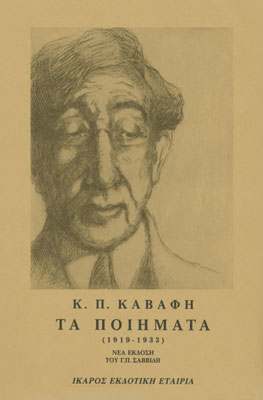 Outrageousness
Outrageousness
I don't think you learn dharma art, you discover it; and you do not teach dharma art, but you set up an environment so it can be discovered.
DHARMA ART IS BASED on energy and conviction. In this regard, the perceptions of everyday life are seen as a resource, or working basis, for both the work of art and the practice of meditation. But there seems to be a need for two further types of energy-the energy of non-aggression and the energy of outrageousness.
Generally, outrageousness is a product of extending oneself: you can't contain yourself, therefore you become outrageous. You tend to spill over what you can't contain in your container. But that doesn't seem to be the case here. Outrageousness here is a sense of direct conviction, in which you feel intense humor, or intense energy and power, penetrating inside. Such outrageousness seems to be necessary, but it has to be accompanied by nonaggression. The question of nonaggression is based on whether you perceive your particular world in connection with glorifying your existence and your ego in the neurotic sense, or whether it is free from that.
That's very definite. But there seem to be mixed feelings in people's minds-inspiration is mixed with ego-centeredness. Somehow, that mixture tends to produce a sense of blindness in which you are unable to see the panoramic vision of a given situation, and consequently you are unable to act accordingly. So there's a problem with being self-centered, if there is aggression as well as self-consciousness. Self-consciousness alone doesn't seem to be a particularly big problem. In fact, sometimes there's room for being self-conscious: the constant checking, constant reviewing, might he a source of further cynicism toward one's ego, which could be desirable. But definitely aggression is a big problem.
Aggression is based on wanting to demonstrate something that you know, wanting to tell somebody the truth you have discovered. Although your demonstration might be okay, even fantastic, and the truth you have discovered may be relevant, the means and way the whole thing is presented seems to he a problem. From that point of view, we can't have rules and regulations as to what to say and what not to say, how to act and how not to act, particularly. The whole thing has to be genuinely intuitive. The medium, or the style that we use in presenting the truth, seems to be the crux of the matter. In other words, an artist may he able to present his or her work of art precisely and thoroughly. But a work of art doesn't come out purely transparent, without personalitv. A work of art always has the smell, so to speak, or the feelings of whoever produced that particular work of art. For instance, the smell and feeling of that person could be extraordinarily aggressive. In that case, no matter what the actual representations may be, the person behind it has a lot of aggression, so more garbage is involved. The question of nonaggression is extremely important. Nonaggression makes art the art of dharma, or truth-real art. Such art has a sense of real simplicity, without any handles attached. We only want to exhibit our work of art, perlhrrn our work of art, or live with our work of art.
In a lot of art there is a tendency to try to capture a glimpse of one moment of experience and make it into a solid eternity. We have some brilliant idea and we try to make it into a piece of art. But that is captured art. We try to capture our artistic talent in a particular work of art -a piece of music, a painting, a poem. Until that work of art is forgotten or destroyed, it is stuck on a piece of paper or Ofl a canvas or on a record that can be listened to over and over. It seems that such an attempt to solidify ones work of art, instead of giving birth to artistic talent, creates death for artistic talent.
We could shift our allegiance from death to life. In that case, art becomes a living continuity and is seen as a perpetual process. First somebody has an idea. The idea is presented in a very embryonic stage at the beginning. It begins as a seed, but then that embryonic essence begins to sprout and to make shoots. As it continues to develop and grow, it makes little flower buds. That concept of art is based on the idea of living. The basic point is that there is a sense of continuity in your understanding of life.
If you know who you are, what you are, where you are, and you have something to say about that, you could share it with your fellow human beings. That's fine. There's nothing wrong with that, as long as you don't want to publicize it. And even if you do want to publicize your embryonic discoveries, you don't spell out the whole thing at once. It is very tempting to spell everything out, which proves one's legitimacy, one's wisdom, or one's artistry. But according to the Buddhist tradition, in communicating with the world, particularly in the realm of art, the only thing you can do is hint, just give a basic headline. It depends on your attitude. If you want to demonstrate something very badly and you achieve that, then your work of art is a dead one. But if you present your work of art as a completely full message without spelling out every word of it, then you have just given the public a corner of what you might say. Therefore it is still fertile in people's minds and there is room for it to unfold. It is living art.
If you expound more than is necessary, it becomes apologetic. And it is boring because the audience begins to follow the logic while you are still standing on it. And you begin to pounce on it at the same time. I think the problem is that people are afraid they might be ignored, they might become failures, so they end up explaining everything they know, all the reference points at once. That attitude of poverty or failure makes your theater dirt, your poetry dirt. Usually the sense of something unsaid but implied makes more sense to people. It is not particularly holding back the truth, it is being honest and at the same time festive about what you have to say. Then art is a living process.
Nonaggression doesn't mean there is a regulation or cutting down of anything. Nonaggression is a product of awakened realization. You don't usually feel a sense of inhibition when you awake during the day from sleep. You just go about your everyday life, because awake and asleep are different. And of course you don't try to fall asleep in the middle of your activities during the day. But at the same time, you don't feel that you are inhibited from anything because you are not sleeping. Nonaggression is an organic process rather than a discipline or moral binding. Nonaggression is seeing through the aggression and realizing there are more ways to be active and efficient than being aggressive; it is realizing a new angle of energy.
In the case of meditation practice, either we do it at the simple, matter-of-fact level or we do it with a very meaningful religious or philosophical undertone. That undertone automatically becomes dogma and belief, and that belief becomes a very definite belief. Because that belief is very definite, therefore you should defend that belief. And defending that belief becomes aggression. The quality of outrageousness is the opposite of that-or the extension of that act without aggression. The definition of outrageousness is basically a sense of humor. In this case, humor is not particularly making fun and mocking somebody or something. Instead, it is an appreciative gesture. That is, things don't seem to be as heavy as we think they are, but they seem to be floating above the ground, and seemingly hilarious, funny, swift, and lucid.
At the same time, humor is not particularly casual or haphazard. The casual approach to life is often the result of being shy and feeling self-conscious and tense, so you would like to pass the buck or divert the attention to some other situation. But that also diverts the concentration of attitude and energy, so it is basically stupid rather than insightful. Humor is not like buying toys for your kids, which is somewhat lighthearted-unless the toy turns out to be extraordinarily expensive. And it is not at the level of the cheap world of plastics or teddy bears. It comes from delight and a sense of celebration. A sense of humor from that point of view is very transparent; at the same time, it is very definite. It has its own background and sanity.
Outrageousness is a question of being fearless in your celebration and your sense of humor. Sometimes it could be somewhat absurd and stubborn, but that seems to be the necessary eccentricity of this particular approach. Again, as long as it doesn't contain aggression and an exhibitionistic outlook, it seems to be quite simple. A sense of conviction brings fearlessness, outrageousness, and a sense of humor. And that basic sense of groundlessness and nonexistence brings up the question of aggression in the practice of art.
In dealing with aggression, we can't really separate ourselves into professional artists, amateur artists, and meditators. At the same time, somebody could be both a professional and an amateur artist and a meditator as well. Those areas are all related. Dharma art does not involve tricks or have to do with training artists in the Buddhist scheme. But our attitude toward art has to be expanded. This society in particular thrives on pigeonholing everybody's style and discipline into categories, which becomes very clumsy and imprisoning.
You could try to continue your artwork and your meditation together, whatever you do in your life and whatever job you might have. I don't think you learn dharma art, you discover it; and you do not teach dharma art, but you set up an environment so it can be discovered. It's like preparing a nice meditation hall, with nice cushions to sit on, so it's inviting for you to sit and take part in meditation practice. The makers of the meditation hail and the cushions can't make you meditate, particularly-that's what you can do. And that is dharma art, it seems to me.









